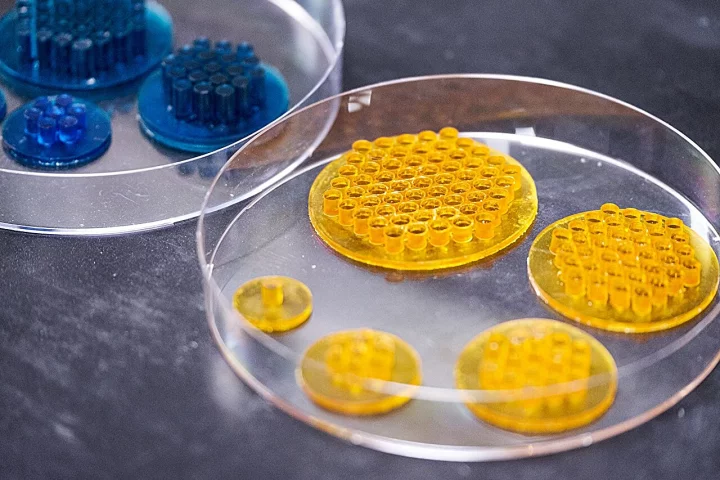new material
-
Scientists at North Carolina State University have created a magnetic “metasheet” that can move objects and liquids around without needing robot arms or grippers.
-
Ice wreaks havoc on surfaces, but we might have a new way to prevent it building up. Scientists at Northwestern University have shown that textured surfaces with thin layers of graphene oxide can stay completely frost-free for long periods.
-
Metalworking usually requires very high heat and pressure, but scientists in Singapore have now demonstrated a way to make very pure metal structures at room temperature. It’s inspired by the exoskeletons of crabs and insects.
-
Gels and glasses are on opposite ends of the material spectrum, but engineers at North Carolina State University (NCSU) have developed a new class called “glassy gels” that are both strong and flexible, as well as sticky and self-healing.
-
Glass might soon have some competition from an unlikely rival – bamboo. Scientists in China have turned regular old bamboo into a transparent material that’s also resistant to fire and water, and suppresses smoke.
-
Forget radioactive spiders – a new breakthrough could make it easier to get Spider-Man’s wall-crawling powers. Scientists in Singapore have created a strong and reusable adhesive out of a shape-memory polymer, triggered by temperature changes.
-
Graphene is the Novak Djokovic of materials – it’s so damn talented that it’s getting boring celebrating each new victory. But an exciting new upstart is challenging graphene’s title. Meet goldene, a 2D sheet of gold with its own strange properties.
-
In many cases nature has better versions of our tech. The newest example comes from a common insect in your backyard, which makes nanoscale soccer balls that hide it from predators – inspiring new, better UV protection and maybe even cloaking tech.
-
Scraping ice off your car window might get a lot easier in the future thanks to a new spray coating developed by scientists in Austria. That's because of the way the molecules line up – or don't – during its high-tech creation process.
-
A plane wing that changes shape in flight to better handle the airflow crossing it could be on the horizon thanks to a materials science advance from researchers in Stockholm. The trick involves the melting and hole-punching power of lasers.
-
Prepare for a radical acceleration in technological development. A Google Deepmind AI has achieved "an order-of-magnitude expansion in stable materials known to humanity," finding about 800 years' worth of new materials with revolutionary potential.
-
Scientists have found that a “superatomic” material is the fastest and most efficient semiconductor ever. Taking advantage of a tortoise-and-hare mechanism, the new material can transport energy much faster than silicon.
Load More










